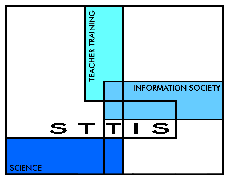Workshop 1
 Contents Contents
|
Section B Learning about the innovation
Activity
B3 Comparing approaches |
|
Aims
-
To consider the merits of different ways of teaching
about energy.
-
To clarify some important scientific ideas related
to energy.
Background
Activities B1 and B2 looked at two different approaches
to the teaching of energy. The first was ‘energy transformation’ in which
energy is seen as something which exists in different forms and which can
change from one form to another. The second approach was ‘energy transfer’
in which energy is seen as staying the ‘same kind of thing, but going from
place to place. This activity compares these two approaches. It also aims
to clarify some of the scientific ideas related to energy, including those
of the Second Law of Thermodynamics, which are the concern of the ‘Energy
and Change’ materials discussed in Activities B4 to B8.
What to do
1. Read through the four explanations on page
2. The first two are about water coming out of a bathroom tap, and
the second two are about heating some oil with an immersion heater. Each
phenomenon is looked at from a ‘transfer’ perspective and a ‘transformation’
perspective. Which of these explanations do you think make sense? Which
do not make sense? Why?
2. Does it make sense to think of energy
as being ‘substance-like’ and flowing from place to place rather like water
does. Or is it conceptually confusing to use a ‘flow’ analogy? Are there
dangers of pupils seeing energy as an actual substance? Do you think that
a ‘transfer’ or a ‘transformation’ approach to energy is more helpful?
3. Look at the statements on page
3, and for each statement decide whether you think it is true or false.
There are some difficult scientific ideas here, which cause most people
to think very hard about the answers. This part of the activity is to help
you clarify these problematic concepts.
|

 Teaching about energy
Teaching about energy

